Orinoco

Saffron toucanet, Pteroglossus bailloni
This toucanet is easily identified by its saffron yellow head and breast, olive mantle and red rump. Sexes are similar but the female is duller (somewhat more olive in color) and the bill is shorter. The greenish-horn bill has red patches surrounded by yellowish-gray at the base. The rump and ocular skin are red. The iris is pale yellowish.
LEARN MORE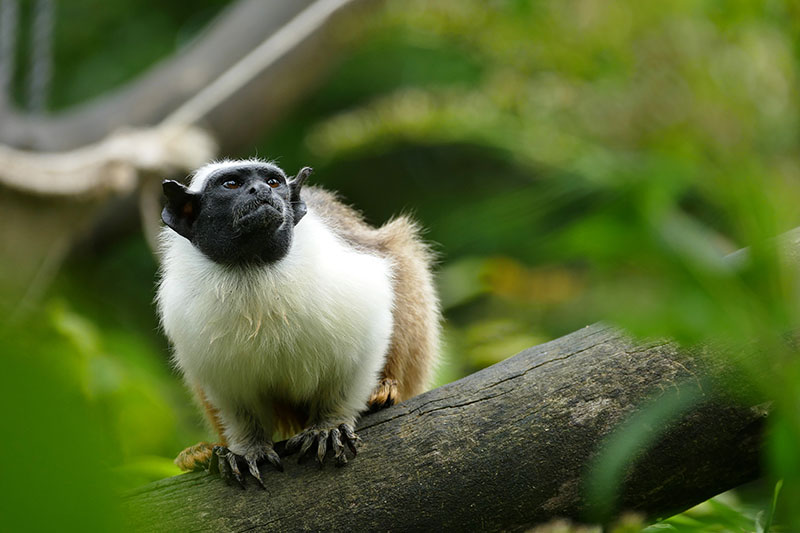
Pied tamarin, Saguinus bicolor
The Pied tamarin is white on its shoulders and front, with a striking dark brown back, hind part and upper tail. The fur lightens to a rust color on the lower belly, inner thighs and underside of the tail. The bald head has black skin and the large ears add to the distinguished appearance of this species.
LEARN MORE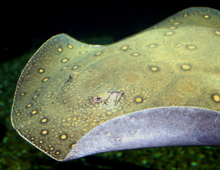
Ocellate river stingray, Potamotrygon motoro
While many of the 20 or so species of South American river stingrays have restricted ranges, this species is found in practically every river basin in South America. It is a popular species in aquariums because of its large orange spots. It can reach a diameter of two feet.
LEARN MORE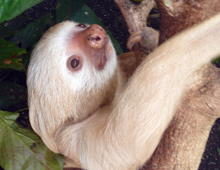
Hoffman’s two-toed sloth, Choloepus hoffmanni
The two species of Choloepus (two-toed sloth) have two toes on their forelimbs, and three on their hind limbs. While the gentle Bradypus (three-toed sloth) eats only leaves of a few tree species, and are notoriously difficult to maintain in zoos, captive Choloepus enthusiastically eat all sorts of vegetables, as well as leaf-eater primate chow, and easily live for decades in captivity. Of the two species of Choloepus, both are found in South America, but only Hoffman’s occurs in Central America as well.
LEARN MORE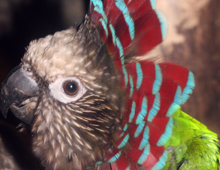
Hawk-headed parrot, Deroptyus accipitrinus
In most classification systems, this northern South American bird is considered one of the most evolved of the 368 species of parrots throughout the world. It has a unique set of elongated red and blue feathers on the back of its head that can be raised into a head-dress like structure, so that another common name is “Red fan parrot”. Until the 1970s it was very rare in zoos, but is now frequently bred, including at the DWA.
LEARN MORE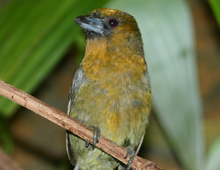
Prong-billed barbet, Semnornis frantzii
The 83 species of barbets are stocky woodpecker relatives found in Africa, Asia and the New World Tropics. The New World species are likely ancestral to the toucans. Found only in Costa Rica and Panama, this species has always been extremely rare in captivity. The specimens at the DWA were obtained through special permits from the Government of Panama.
LEARN MORE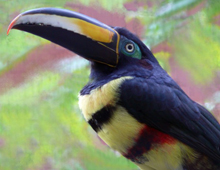
Many-banded aracari, Pteroglossus pluricinctus
Compared to some other toucans, this species has a rather limited range in the north-western corner of South America, found in parts of Venezuela, Colombia, Ecuador, Peru and Brazil. It has never been common in zoos and was not bred in captivity until 2009, at the DWA, where specimens were received through the cooperation of the Venezuelan organizations PROFAUNA and FUNZPA. While it may appear bewilderingly similar to other aracaris, the two complete black bands across its chest distinguish it from any other toucan.
LEARN MORE
Humboldt’s lettered aracari, Pteroglosus inscriptus
Named for the pattern on its beak, the Lettered aracari has a larger South American range than its close relative, the Green aracari, but is much rarer in captivity. The first breedings outside of South America did not take place until 2010, when both the DWA and a private collection in California were successful. As with the Green aracari, males have black heads and females have brown heads.
LEARN MORE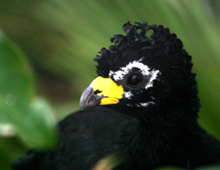
Bare-faced curassow, Crax fasciolata
Found in a large area of Brazil, as well as Bolivia, Paraguay, and tropical Argentina, this has the southern-most range of the 14 species of curassows. All of these turkey-sized birds are considered delicious and subject to hunting pressure and most are of concern to conservationists. This species, however, is considered comparatively abundant, though no longer found in parts of its range. Rare in US zoos, it is widespread in European collections.
LEARN MORE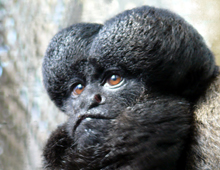
Red-backed bearded saki, Chiropotes chiropotes
Though it is not at all rare in its native Northeastern South America, this startling-looking monkey has always been very rare in zoos. It had a reputation for being delicate in captivity, but since their arrival in Dallas in 2010, the ones at the DWA have proved robust, and have already produced offspring. They differ from White-faced sakis (whose tails usually hang straight down) by the continuous motion of their remarkably squirrel-like tails.
LEARN MORE

